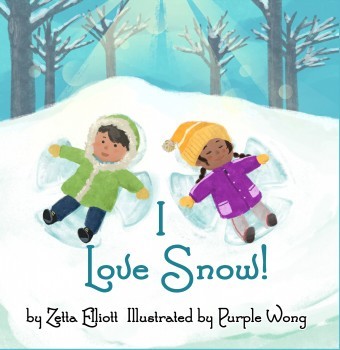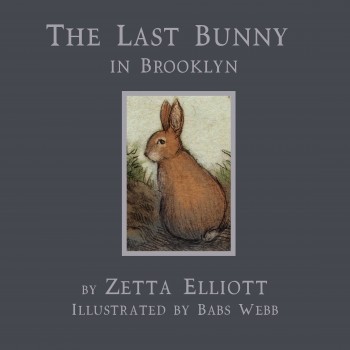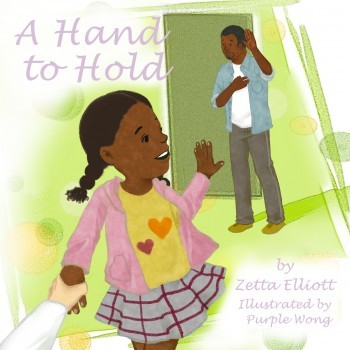did you know…?
 Did you know that many public libraries won’t acquire a book unless it has been reviewed in a professional journal like Booklist or Publishers Weekly? And did you know that almost all of those review outlets refuse to review self-published books? (Kirkus will if you’ve got $400) So if you’re a writer of color and you’ve been shut out of the publishing industry, deciding to self-publish means facing yet another set of obstacles. UNLESS a radical librarian from Oakland decides she will take on the task of reviewing self-published books in a quarterly column for School Library Journal! Here’s the introduction to Amy Martin’s SLJ column “Indie Voices,” which provides the rationale for adding indie titles to library collections:
Did you know that many public libraries won’t acquire a book unless it has been reviewed in a professional journal like Booklist or Publishers Weekly? And did you know that almost all of those review outlets refuse to review self-published books? (Kirkus will if you’ve got $400) So if you’re a writer of color and you’ve been shut out of the publishing industry, deciding to self-publish means facing yet another set of obstacles. UNLESS a radical librarian from Oakland decides she will take on the task of reviewing self-published books in a quarterly column for School Library Journal! Here’s the introduction to Amy Martin’s SLJ column “Indie Voices,” which provides the rationale for adding indie titles to library collections:
Self-publishing platforms like CreateSpace and cheap, accessible printing technology have made it easier than ever for authors to publish independently. This, coupled with the misguided notion that writing books for children is “easy,” can lead to some paltry offerings. After all, what book couldn’t benefit from a talented editorial, design, and marketing team? Yet despite its checkered reputation, a growing number of talented authors and illustrators are producing finely written, beautifully illustrated, and smartly designed works that completely skirt the traditional publishing avenues.
It’s difficult to break into the business of making children’s books. That goes double for people of color, queer authors, the differently abled, and/or those creating stories about people who identify with one or more of those categories. Self-publishing can give voice to marginalized people who may be overlooked by mainstream publishing. In this first column, I recommend a handful of self-published titles whose skillful presentations of diverse stories make them worthy purchase for libraries serving children.
 I’m honored to have I Love Snow included in Amy’s list of seven great indie titles. I should note that Amy Cheney also reviews for SLJ and already welcomes indie authors; she even set up an award for books that reflect the realities of urban youth. IndieReader also shines a light on self-published books by marginalized writers. They included The Last Bunny in Brooklyn in their list of “6 Titles to Help #DiversifyYourReads.” Joe Sutton’s remarks echo those made by Amy:
I’m honored to have I Love Snow included in Amy’s list of seven great indie titles. I should note that Amy Cheney also reviews for SLJ and already welcomes indie authors; she even set up an award for books that reflect the realities of urban youth. IndieReader also shines a light on self-published books by marginalized writers. They included The Last Bunny in Brooklyn in their list of “6 Titles to Help #DiversifyYourReads.” Joe Sutton’s remarks echo those made by Amy:
One of the best things about self-publishing is how it empowers diverse authors, who might otherwise need to get “permission” from more short-sighted traditional publishers, to get their works published and read. And with many less expensive options (ebooks, POD) replacing high-price vanity presses, another barrier has been lifted, making self-publishing a more accessible and less costly option.
While the traditional publishing industry still devotes most of its attention to white, male authors, the indie scene has an abundance of diversity and cultures. If you’re resolving to add a little diversity to your library, start with this handful of authors!
 I sent out digital review copies of A Hand to Hold yesterday and the response was heartwarming! I feel so blessed to have the support of teachers, and librarians, and other book lovers. Their excitement about my stories means young readers around the country—and the world—will soon have more “mirror books” in their hands! If you’re a librarian, I hope you’ll consider whether the policies at your branch are contributing to the “diversity gap.” Please don’t place yet another barrier in the path of marginalized writers…
I sent out digital review copies of A Hand to Hold yesterday and the response was heartwarming! I feel so blessed to have the support of teachers, and librarians, and other book lovers. Their excitement about my stories means young readers around the country—and the world—will soon have more “mirror books” in their hands! If you’re a librarian, I hope you’ll consider whether the policies at your branch are contributing to the “diversity gap.” Please don’t place yet another barrier in the path of marginalized writers…



